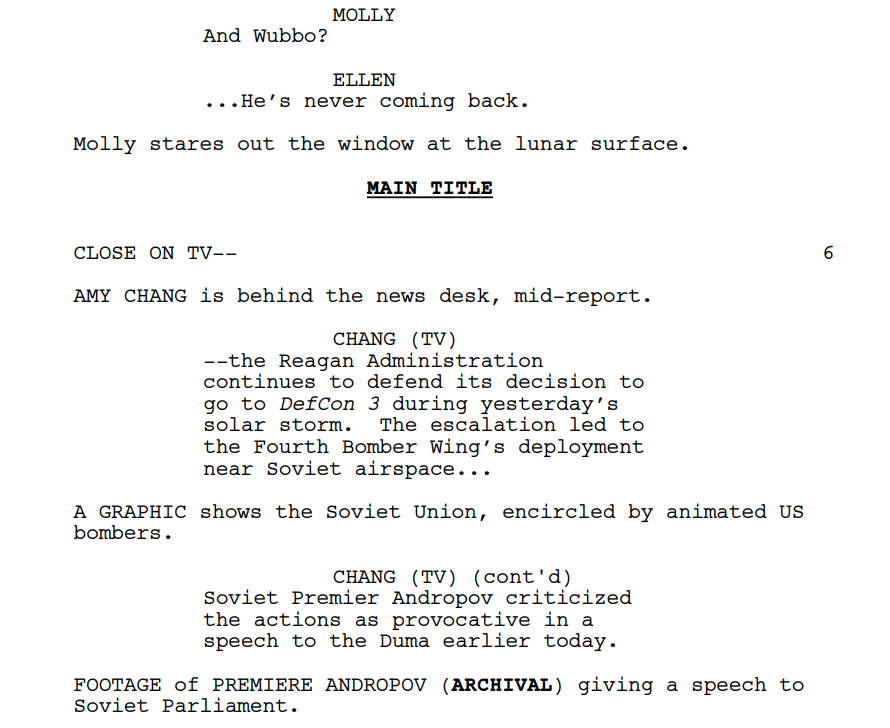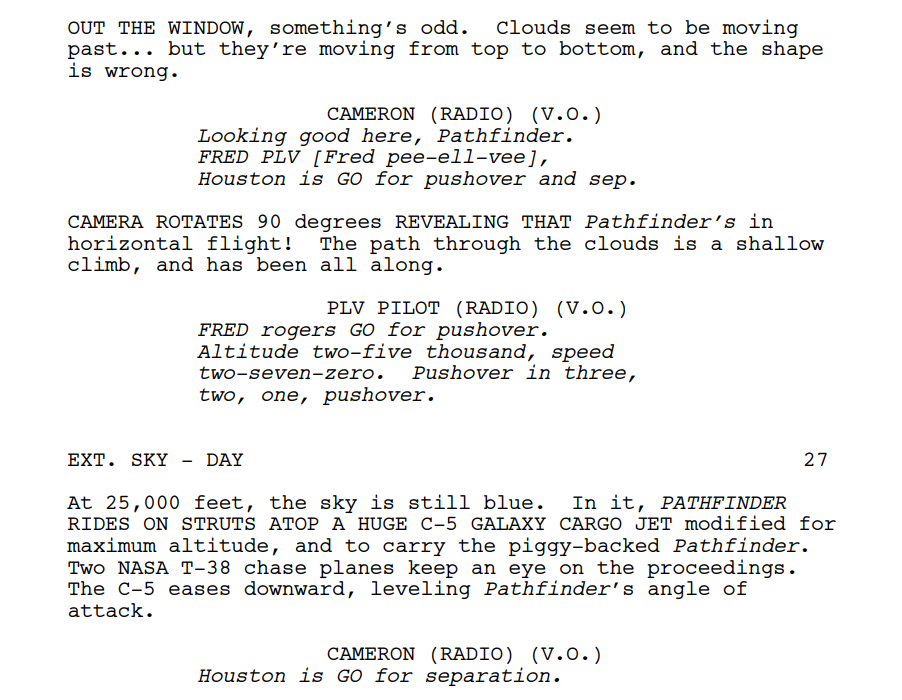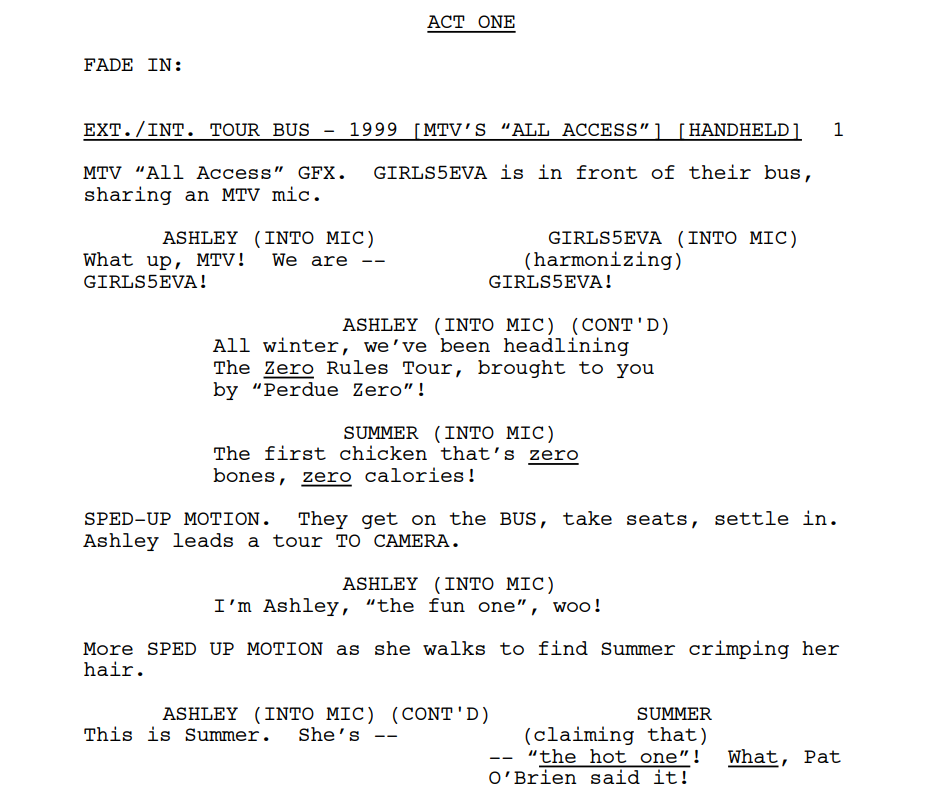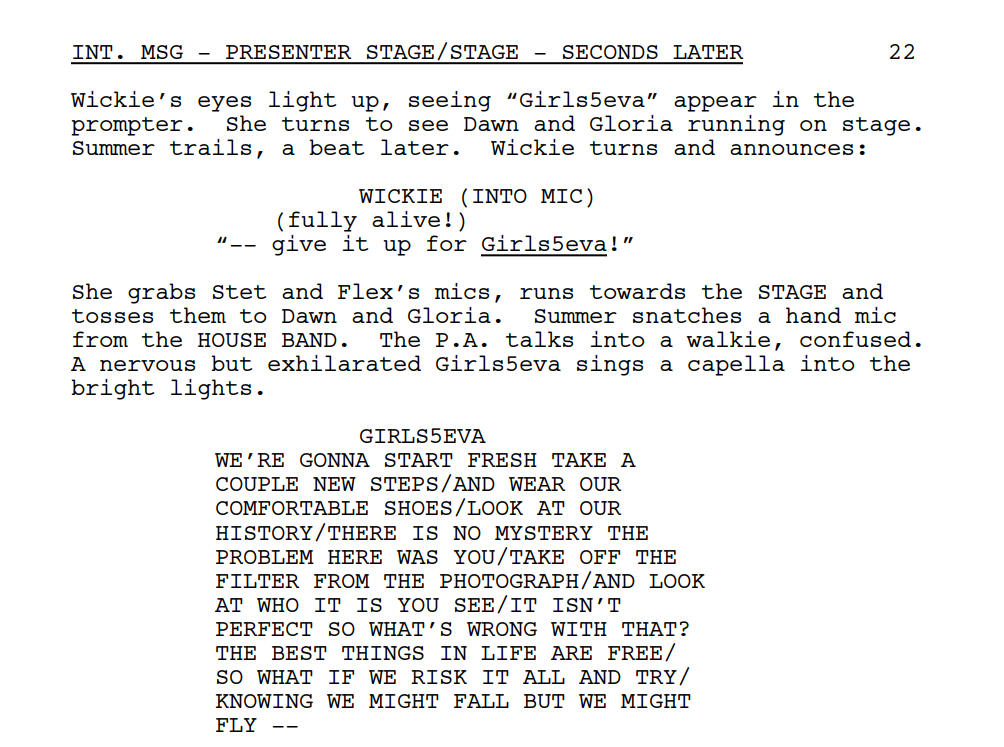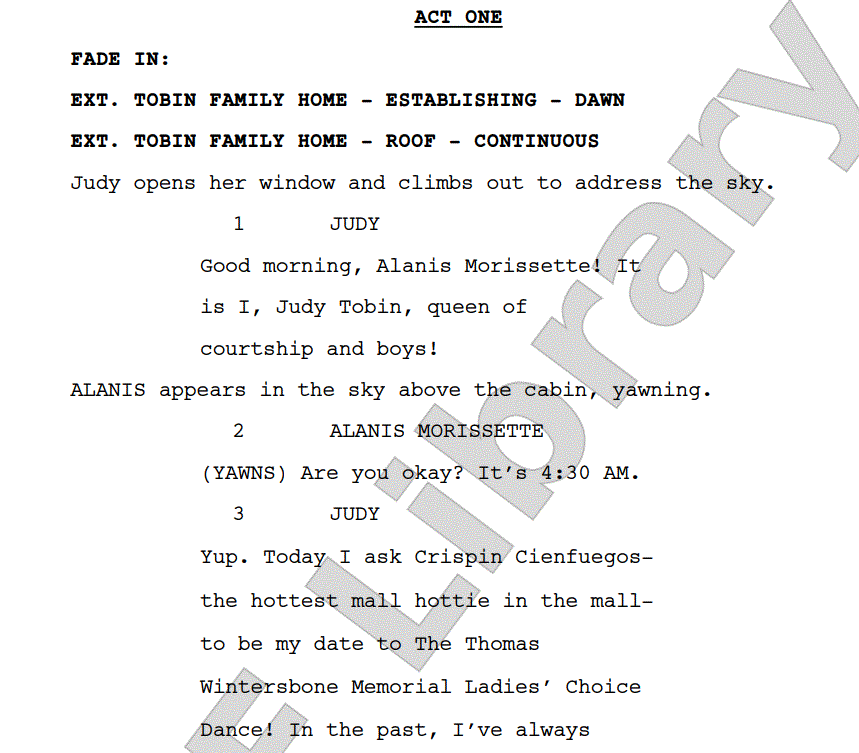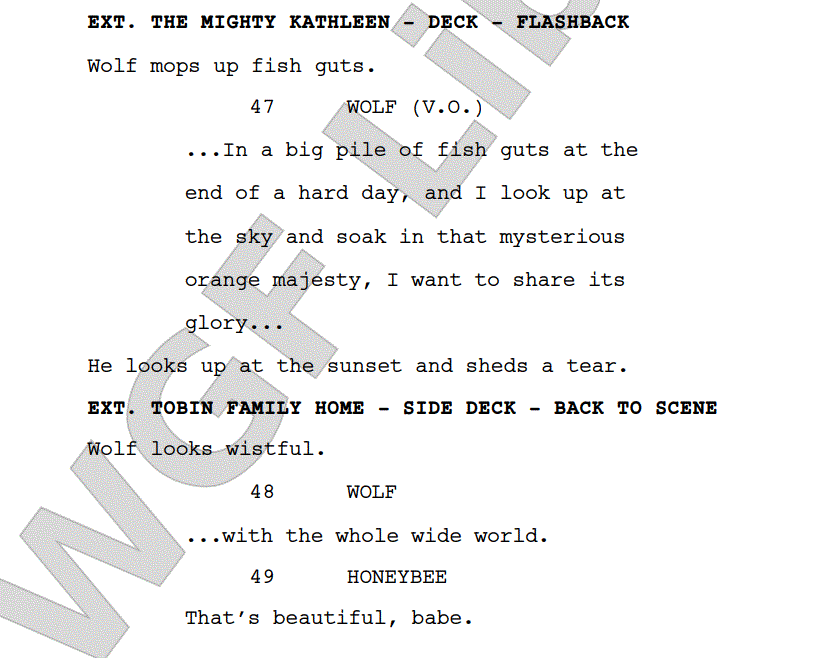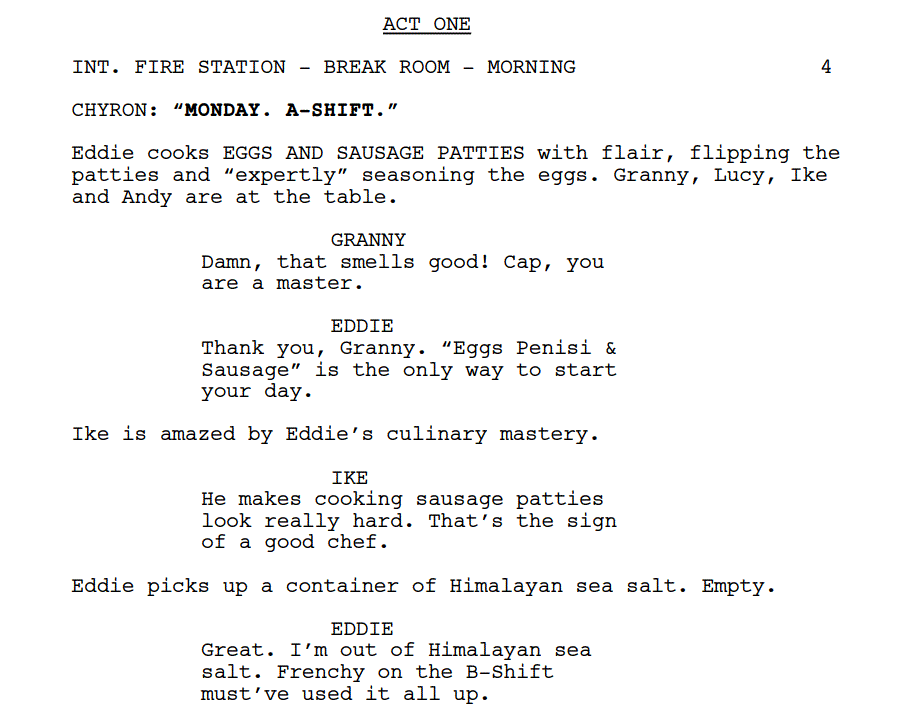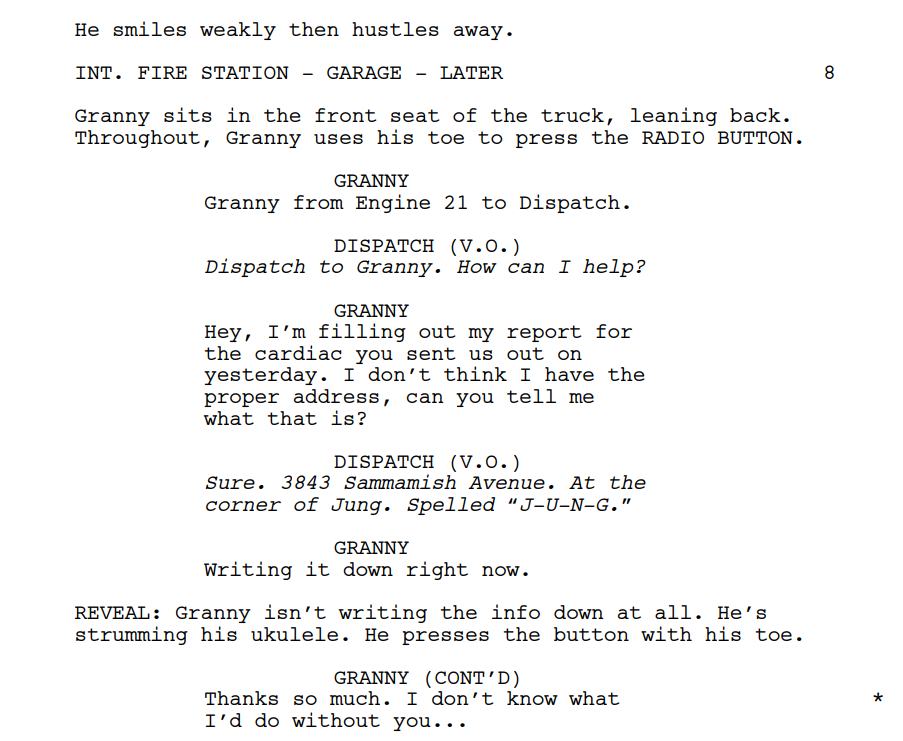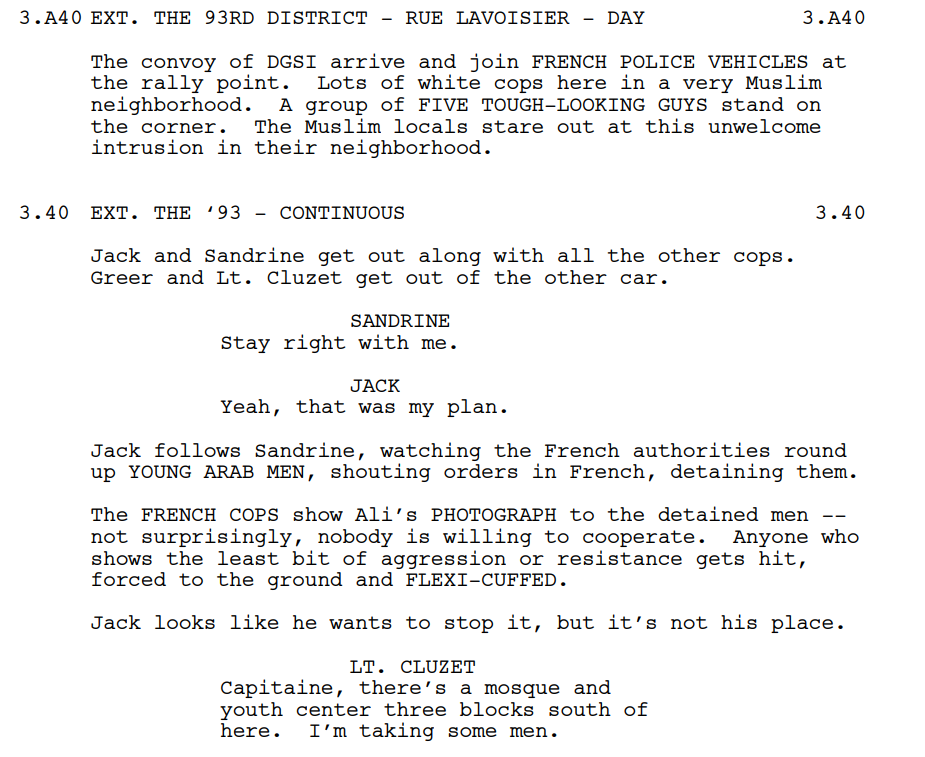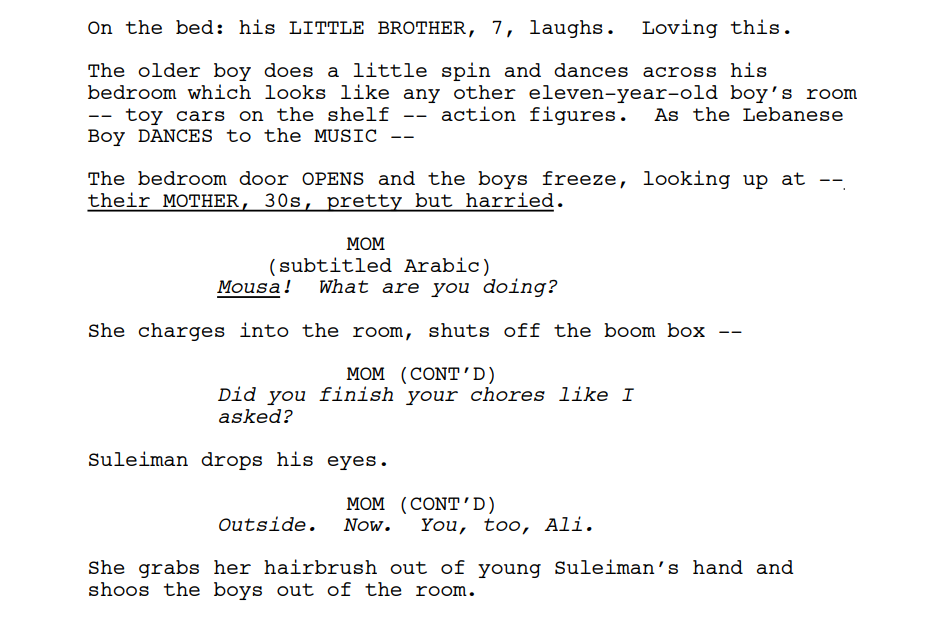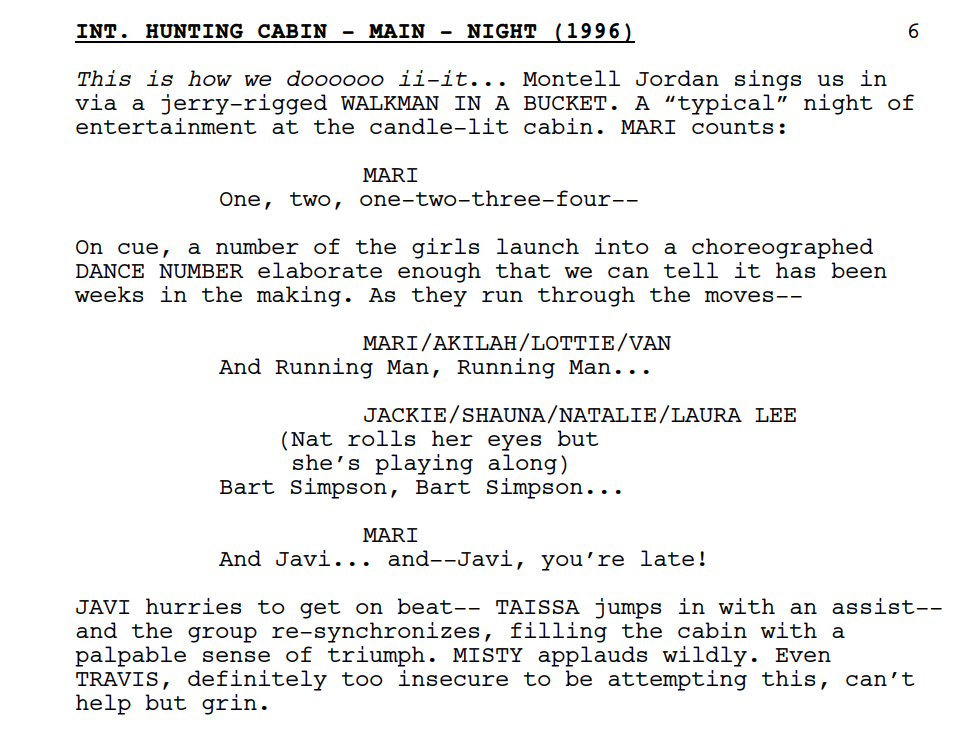FORMATTING YOUR SPEC SCRIPT: A PRIMER, PART 21
If you’re applying to a fellowship or taking a TV writing class or just trying to learn the mechanics of TV writing as you build your portfolio, we likely have scripts you want to look at in the library for your research—scripts that you can’t find anywhere else. You might be frustrated you can’t come in and look at them.
If you feel stymied by our in-person closure (or live outside LA), this blog series is for you. These primers are meant to supply the notes you’d take if you came to read scripts in-person.
As always, we aren’t able to send out scripts in full as we are not the copyright holders, but we hope this primer jump-starts your research and writing. If you have further, more specific questions about the shows covered in this (or any other) formatting post, please e-mail us at library@wgfoundation.org and we can help clarify or provide more info.
FOR ALL MANKIND (Apple TV+)
Average page count: 61-66
Average scene count: varies -- as low as 20 as high as 86
Broken into acts? No
Other things to consider:
For All Mankind scripts are not broken into acts, but most scripts have a main title cue. This cue usually occurs about 3-15 pages into the script (usually close to 4 pages in) and is formatted: MAIN TITLE in all CAPS, centered, bolded and underlined.
The show utilizes lots of archival footage. When archival footage is shown on screen, the scripts specify (ARCHIVAL) in parentheses and bold in the scene heading… or in the description.
Any archival video or audio (both in description and dialogue) is italicized.
When dialogue emanates from the TV or radio, the writers put (TV) or (RADIO) (V.O.) next to the speaker’s name in parentheses, e.g. RONALD REAGAN (RADIO) (V.O.) or DAN RATHER (TV). Sometimes real, historic speeches are used.
In the shooting scripts, there are lots of camera directions written in CAPITAL letters.
Sometimes dates and locations are presented as text on screen. This text is always bolded. Sometimes it’s preceded by “CHYRON:” but not always.
Much of the action takes place at the Johnson Space Center. In the scene headings, this is abbreviated “JSC” but for the purposes of your spec, you might want to write it out the long way, so the reader isn’t confused.
GIRLS5EVA (Peacock)
Average page count: between 30-32
Average scene count: 18-24
Broken into acts? Yes, 3
Other things to consider:
Scene headings are underlined.
Scripts are broken into three acts. Act headings are formatted: ACT ONE / END OF ACT ONE, centered, underlined and sometimes bolded.
The end of act three ends: END OF EPISODE, centered and underlined and is typically preceded by “FADE OUT.” on the right-hand side in all caps.
If something is sung, the words are presented in all-CAPS in the dialogue.
The description includes lots of visual gags – and is often as funny as the spoken dialogue.
The scene headings use brackets instead of parentheticals. If we’re seeing news footage or a flashback, this is specified in brackets at the end of the scene heading. e.g. “EXT. A ROOF IN FLORIDA [W-TIT NEWS TAMPA FOOTAGE]” or INT. "INT. "LARRY KING LIVE" STUDIO - 1999 [FLASHBACK]”
THE GREAT NORTH (Fox)
Average page count: 49-51
Average scene count: 30-45
Broken into acts? Yes, 4
Other things to consider:
Scene/act headings are bolded.
Scripts are broken into four acts. Acts one, two and three fall into the 8-18 page range. Generally, act one is the longest. Act four tends to be shortest, around 5-8 pages.
Act breaks are formatted: ACT ONE / END OF ACT ONE, then at the end of the act four: END OF EPISODE. The act headings are bolded in the same way as the scene headings.
In animated shows like these, sometimes the writers include an establishing scene heading to show the exterior of a location before we go inside, e.g. “EXT. TOBIN FAMILY HOME – ESTABLISHING – DAWN” to “EXT. TOBIN FAMILY HOME – ROOF – CONTINUOUS”
Scene transitions, if used, are on the right-hand side in bold and all-CAPS, e.g. “WIPE TO:” or “FADE OUT.” These scene transitions are most often used at act breaks.
Dialogue is double-spaced much like in a multi-cam sitcom.
There are no extra spaces between dialogue, description and scene headings.
Flashbacks are noted in the scene heading. When the flashback ends, the next scene heading says “BACK TO SCENE”
TACOMA FD (TruTV)
Average page count: 30
Average scene count: 16-22
Broken into acts? Yes, cold open + 4 acts
Other things to consider:
Scripts are divided into four acts and a cold open.
The cold open is typically 2-3 pages long, formatted: COLD OPEN / END OF COLD OPEN, centered and underlined.
Acts one and two run between 6-11 pages. Act three runs a little shorter at 5-7 pages. Act four runs 1-3 pages. It might be helpful to think of act four more like a tag. Instead of END OF ACT FOUR, the last act ends: END OF SHOW, centered and underlined.
CHYRON or text on screen is presented in bold.
The scripts bold, underline or italicize significant visuals and sounds. For comic effect, the writers use onomatopoeia, e.g. WAHHHHHHH!!!!!!! for an alarm sounding.
If a character is speaking through the radio or from dispatch, the text is written in italics.
TOM CLANCY’S JACK RYAN (Amazon)
Average page count: 55-60
Average scene count: 62-87
Broken into acts? No
Other things to consider:
Like many streaming shows, the scripts are not broken into acts, but end with END OF EPISODE centered and underlined.
New, significant locations are centered and bolded.
Flashbacks are in italics with the year we're flashing back to in parentheses in the scene heading like (1988).
These scripts are not afraid to have lots of description -- it's a visual show. They're also not afraid to use big, blocky monologues.
Scripts also occasionally underline or CAPITALIZE something significant in the action.
For dialogue spoken in another language, they occasionally use a parenthetical before dialogue... or they just note it in the description.
YELLOWJACKETS (Showtime)
Average page count: 53
Average scene count: 40-60, usually in the 50s
Broken into acts? No
Other things to consider:
Scene headings are bolded and underlined.
While there are no act breaks specified on the page, there is a main title cue. This happens usually around page 4, but could happen earlier or later. It happens on page 7 in one script. This is formatted MAIN TITLES, in CAPS and in bold on the left-hand side.
The scene headings end with (1996) in parentheses or (PRESENT DAY) to specify which timeline we’re in., e.g. -- EXT. HUNTING CABIN - WILDERNESS - DAY (1996) or INT. SADECKI HOUSE - SHAUNA’S ROOM - DAY (PRESENT DAY). For scene headings in the wilderness, the writers often specify WILDERNESS preceded by the part of the wilderness.
Episodes end: END EPISODE in bold on the left hand side....
Until next time, happy writing!

